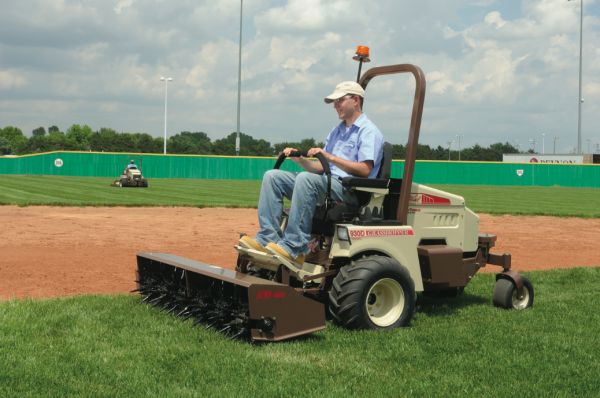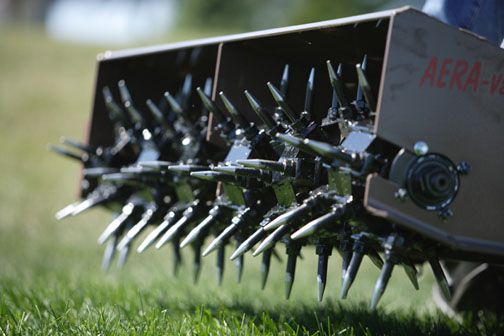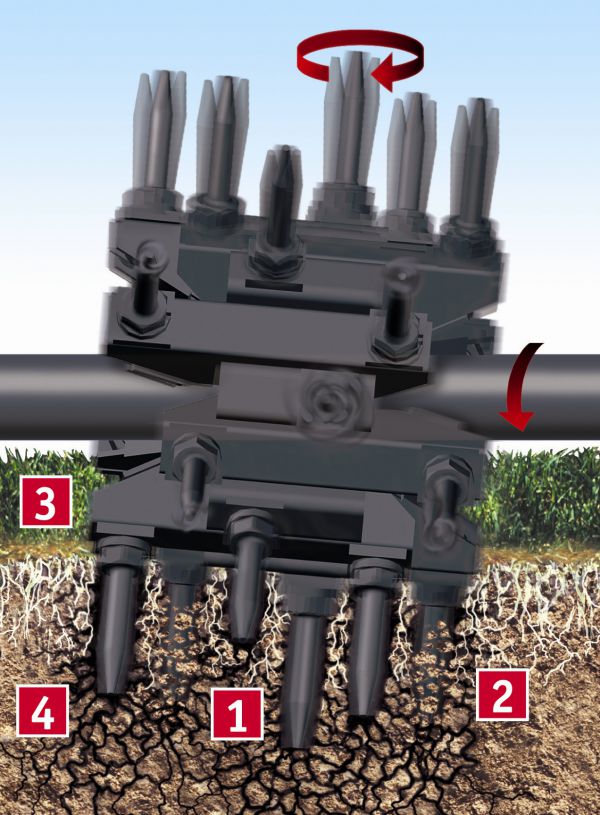Lawn Care Tip of the Month: Aerating & overseeding.
Posted on:Mar 15, 2016
This is Part III of our Lawn Care Tip of the Month blog series.
The official start of Spring is only days away, but it certainly feels like spring has sprung already. The grass is greening up and the pear trees are blooming.
In this installment of our Lawn Care Tip of the Month series, we'll go in-depth with Aerating and Overseeding.

Lawn Care Tip: Why Aerate & Overseed Your Lawn?
Aerating and overseeding is an essential step in creating a lush, healthy lawn. There are several benefits to aerating and overseeding.
First, you'll relieve soil compaction. This will allow better absorption of nutrients, air and water into the soil where the turf needs it most: in the root zone.
Second, aerating allows spaces for those seeds you're spreading to germinate in the soil, rather than on top of the turf or in the thatch layer.
Third, overseeding will fill in the bare patches of your lawn and help with weed control. By encouraging new turf growth, you're limiting the space weeds have to grow and improving the appearance of your lawn.
Fourth, by overseeding with different varieties of grasses, you'll help your lawn develop a disease and drought resistance.
Lawn Care Tip: When to Aerate & Overseed Your Lawn?

Timing is important when aerating and overseeding your lawn. You want to encourage the new growth to establish well before the hotter, drier months try to undo all your hard work.
It's always best to aerate and overseed in the fall, so the lawn has time to settle and seeds have time to germinate and ride out the winter before really taking off in the spring. However, you can aerate and overseed in the spring to encourage more growth and fill in the bare spots.
Now — the month of March — is a good time to do this. As you know, "April showers bring May flowers," or in this case "April rains encourage May lawn gains..." (yeah, we just made that up). You'll still have two months or so of cooler, wetter weather before summer arrives.
Lawn Care Tip: How to Aerate & Overseed Your Lawn?
There are two approaches to aerating your lawn: core aerators and coreless aerators. Many walk-behind aerators pull cores, or "plugs," and leave them on the turf surface to breakdown over time. This can be unsightly and potentially hazardous, as the cores can cause an uneven walking surface and they can pull up weed seeds that have not germinated — which defeats the purpose of weed control by aerating and overseeding.

Grasshopper recommends a CORELESS aerator — such as the AERA-vator™ coreless lawn aerator attachment for Grasshopper FrontMount™ mowers — for several reasons:
1) Oscillating and vibrating steel tines deep-fracture hard, dry soils between the holes both sideways and downward, improving permeability, drainage, water infiltration and nutrient absorption in the root zone by four times that of other core aerators.
2) Additional pore space under surface provides enhanced root growth. Variable depth control ensures aeration at all levels of root zone.
3) Effective aeration with minimal surface disruption, leaves no cores to clean up and turf is ready for use immediately.
4) No slicing or cutting action to preserve delicate turfgrass roots and stimulate future growth.
If you would like more information about the Grasshopper AERA-vator coreless aerator, or if you have additional questions about aerating and overseeding your lawn, let us know. Give us a call at (620) 345-8621, or you can get more information at grasshoppermower.com.

